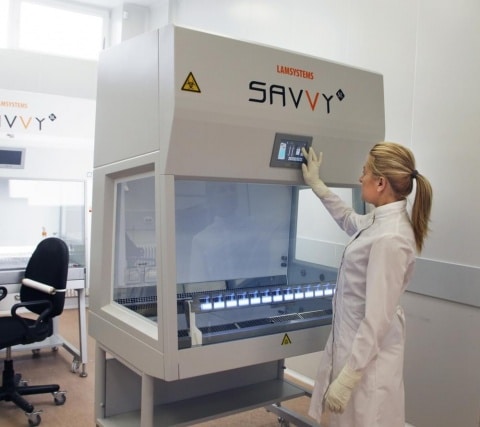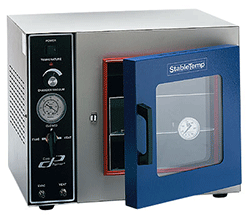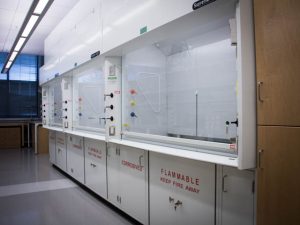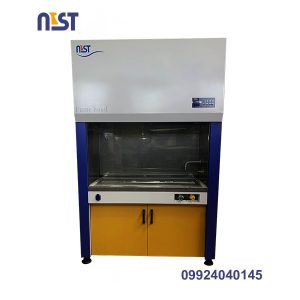- تاریخ انتشار: 5 شهریور 1401

From a basic point of view, a class 1 laminar hood and a biological microbial hood are both enclosed protective enclosures used in laboratory environments. Despite having a common feature of providing a clean work area, these types of equipment should be considered separately. This means that a class 1 laminar hood can never be used instead of a biosafety hood. These devices offer different levels of protection, which is why they serve slightly different purposes.
Choosing between a class 1 laminar hood and a biological microbial hood depends on what you want to protect: the product, the user, the environment, or a combination of all three. So, once you set that goal, you’ll have a better idea of what kind of car is right for you.
You should also determine the future uses of the equipment, pollution laws, and the extent of its potential harm to human health and the environment. Operations involving hazardous agents must be performed in accordance with appropriate safety requirements. For example, some tasks may be suitable for a class 1 laminar hood, while infectious agents require a different approach.
When is the vertical class 1 laminar hood the best choice?
The vertical class 1 laminar hood is a clean bench that provides a contamination-free area for handling laboratory samples, products and other samples. Vertical systems are designed to pass HEPA-filtered air downward along the work area.
An important feature to consider is that Class 1 laminar hoods are suitable for non-hazardous products that are safe for operator inhalation. There are limitations in terms of personnel protection. These devices ensure adequate protection for samples during tests, inspections, assembly, etc. However, they do not protect people operating the hood and anything else outside of the enclosure.
Class 1 laminar hoods do not release polluted air from the outside of the hood, but the airflow from the inside is eventually discharged into the room. Therefore, if you need a more comprehensive type of protection, for example when working with hazardous materials, consider other types of equipment.
You can use class 1 laminar hood in the following cases:
This requires clean, particulate-free air quality.
There are no harmful substances.
You must protect the product but not the user environment or the environment.
Class 1 laminar hood systems are used in various industries where it is necessary to maintain a very clean working environment without biological contamination and particles. For example, we can mention medical, pharmaceutical, scientific and electronic fields. Here are a few jobs that a class 1 laminar hood can be used for:
Preparation and supply of sterile pharmaceutical products
Production and validation of medical equipment
Cell culture experiments
Preparing and pouring bacterial growth medium
Quality control and sterility testing
Electronic and optical sets and systems
Time to choose a biological microbial hood
Biological microbial hoods are enclosed devices equipped with HEPA filter(s) to protect users, products, and the environment from hazardous materials. They are designed to remove potentially hazardous biological agents before exhausting the air. As a result, all microorganisms, viruses and bacteria are kept inside the chamber. These hoods are often used in laboratories to conduct research, clinical trials, and various types of testing.
The term biological microbial hood can only be used to meet Class I, II or III specifications. It should follow international biological safety standards in terms of design, air flow pattern with air flow velocity vectors and their output mechanisms.
The selection of a hood for safety against biological agents is based on the level of biosafety it should be suitable for. Depending on the user and workspace required for a particular task, you may need:
Class I – for operator protection only.
Class II – Protection of the operator, the product and the environment against potential aerosol transport substances, associated with human diseases and primary hazards.
Class III – Operator, product and environmental protection for specialized laboratory equipment dealing with lethal pathogens.
Class I BSC is characterized by outside air penetration. This means that the studied sample comes into contact with polluted air from outside, but the operator is not exposed to it. This type has limited application options, which is why it is less used than the other two types.
When you want to use Class II biological microbial hoods after placing the product in the tray. These machines are built with internal airflow (for operator safety), particle-free air filtered with a HEPA filter down (to protect the product), and equally clean air to the discharge components (for environmental protection). . It is a widely used hood in drug preparation, research, development, etc.
Class III biological microbial hoods have maximum leak-proof construction. Features a fully enclosed front panel to eliminate personnel exposure to product, airtight seals to keep contamination inside as well as air out, and a double-door passageway to transfer material from non-sterile to sterile door. The inner door of this type is used for very dangerous and life-threatening factors.
Summary:
The major differences between these two types of equipment depend primarily on the needs of a particular laboratory and the type of protection a job requires. In this regard, class 1 laminar hoods have the characteristics of
They are:
product protection only;
Not suitable for biological or chemical hazards.
Biological microbial hoods can:
Ensuring product, personnel and environment protection;
Continue working with infectious agents.
If you’re not sure which protective device is right for your needs, contact our experts at Noor Sanat Tadiz Firdos. We help you determine your specific needs and choose the right equipment.







دیدگاه شما